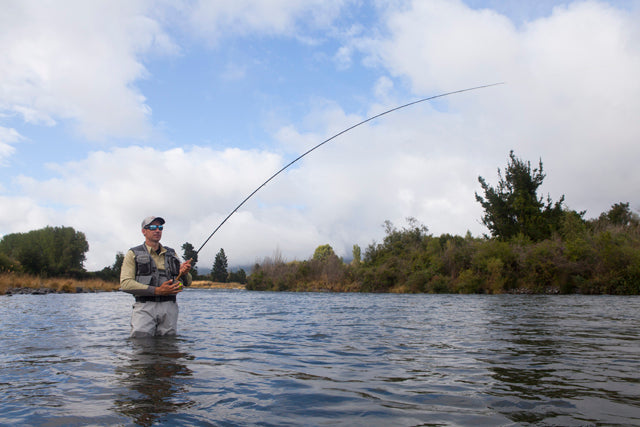Techy Thursday - Plan Your Swing
You see it too often. A bunch of mates are swinging a pool yet there is that one guy getting the lions share of the eats. Chances are, most of the crew are lifting, setting their anchor, and sending that cast out across stream without any specific target in mind. A buddy once said to me “it’s better to only just miss a small target, than miss a large target, or not have a target at all”.
That one guy is likely to be doing a number of things differently.

The ability to read the water will often make or break your swing session, and the ability to understand and control your swing are two things that set aside our ‘one guy’ and his crew. Many days you’ll often notice certain ‘hot moments’ in your swing where you seem to be getting most of the grabs. Chances are this is as the tension is removed from your drift early into the swing, or later in the swing as the fly begins to decelerate. In short, you need your fly to behave as it needs to, as it passes where the fish are most likely to be. Not often will your entire swing be fishworthy.
One of the top tips I give all anglers I teach is to have a target. Now this isn’t where the fly is going to land, but where it is going to pass through at the best of the swing. Much like shooting a duck on the wing where need to plan the shot, follow the bird with your shotgun and then precisely squeeze the shot when the barrel leads the bird. You need to work out where your fly needs to land, how you want to mend and when to commence the swing for your fly to be in the zone, working at the right depth and speed as it passes through the hotspot rather than just ‘pointing and shooting’.

Consider the length and weight of your sink tip, your leader length and the fly / flies you’ve chosen and how this all works as a team. A shorter, heavier tip with a short trace and conehead will perform much differently than a lighter bugger on a 10’ intermediate polyleader with six feet of 3x and will require a much different approach.
Look for ledges, drop offs, seams, or resting water which is the fishiest water in the downstream arc below. Decide where the fish are most likely to be for the conditions on the day, land your fly and get it to the right depth and position so when it passes the fishiest water, it is swinging at the speed you need.
Much of the time you want to be doing absolutely nothing as your fly passes the hot spot, confident that everything you have done prior has your fly travelling with good contact, at the right depth and swinging at the right speed to get that bite.

Many think when throwing streamers they can just put it anywhere and the fish will move to it. This may approach true when pods of fresh run fish are new to the river, however that’s the exception. In the depths of winter you must often work hard, cover the water well and thoroughly to get that grab. The fly often has to pass very close to the fish, often repeatedly and this will happen more often if you choose your targets. So put a little thought into it, read your water and plan your swing, and you could become that One Guy this winter.
